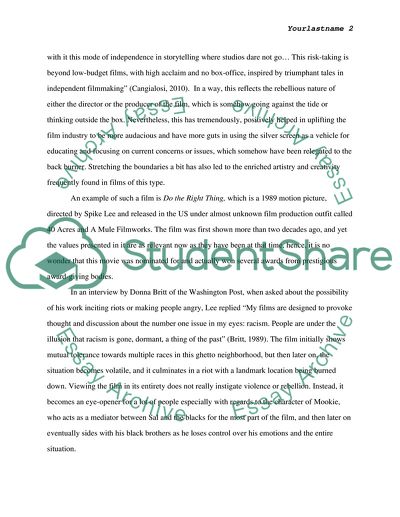Cite this document
(“The importance of a film Do The Right Thing, directed by Spike Lee, in Essay”, n.d.)
Retrieved from https://studentshare.org/visual-arts-film-studies/1592626-the-importance-of-a-film-do-the-right-thing-directed-by-spike-lee-in-the-world-of-independent-american-film-of-the-eighties-and-nineties
Retrieved from https://studentshare.org/visual-arts-film-studies/1592626-the-importance-of-a-film-do-the-right-thing-directed-by-spike-lee-in-the-world-of-independent-american-film-of-the-eighties-and-nineties
(The Importance of a Film Do The Right Thing, Directed by Spike Lee, in Essay)
https://studentshare.org/visual-arts-film-studies/1592626-the-importance-of-a-film-do-the-right-thing-directed-by-spike-lee-in-the-world-of-independent-american-film-of-the-eighties-and-nineties.
https://studentshare.org/visual-arts-film-studies/1592626-the-importance-of-a-film-do-the-right-thing-directed-by-spike-lee-in-the-world-of-independent-american-film-of-the-eighties-and-nineties.
“The Importance of a Film Do The Right Thing, Directed by Spike Lee, in Essay”, n.d. https://studentshare.org/visual-arts-film-studies/1592626-the-importance-of-a-film-do-the-right-thing-directed-by-spike-lee-in-the-world-of-independent-american-film-of-the-eighties-and-nineties.


